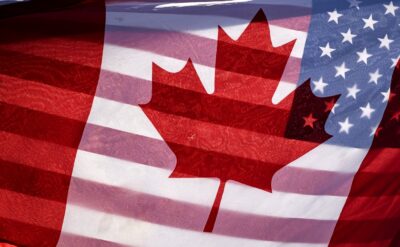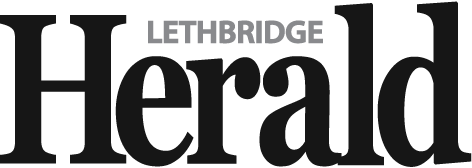‘The flag flies for all.’ Facing threats, Canada sees renewed sense of pride in flag
By Canadian Press on February 14, 2025.

FREDERICTON — Graydon Miles was driving down Highway 7 in Ontario last year when he saw an upside down Maple Leaf flying from a pickup truck, along with one flag directing an obscenity at Prime Minister Justin Trudeau and another supporting Donald Trump’s 2024 presidential bid.
For Miles, a high school teacher who lives in Ottawa, the truck brought back memories of the “Freedom Convoy” that took over the city in 2022. The noisy protest attracted thousands of demonstrators to Parliament Hill fighting against public-health restrictions, COVID-19 vaccine mandates and the federal government, and Canadian flags were omnipresent among the protesters.
“I’ve always been a proud Canadian and felt that our flag represented a way for others around the world to tie us — as peacekeepers, Olympians and backpackers — to the values we were most known for,” Miles said in an interview Wednesday. “For me, these traits included civility and humility, kindness and compassion, and being distinctly non-American.”
The convoy left him angry that the flag “suddenly seemed to represent, both at home and on the world stage, the exact opposite of what I always thought it meant.”
Miles was not alone in cringing slightly at the sight of the Maple Leaf and wondering about the motives of someone putting it on display. But in the wake of anti-Canadian rhetoric from U.S. President Donald Trump, who has repeatedly said Canada should become the 51st American state, a renewed sense of patriotism is sweeping the country, including a reclaiming of the flag. A Leger poll published this week found Trump’s threats are driving a swell of national pride, with 85 per cent of Canadians saying they feel proud to be Canadian.
Stewart Prest, a political science lecturer at the University of British Columbia, said people are again seeing the flag as a symbol of tolerance and inclusion, and of Canadian distinctiveness from the United States. During the “Freedom Convoy” protests, it “came to symbolize a new form of identity,” he said, but now Canadians of all political stripes are being urged to wave it proudly.
“The flag flies for all,” he said.
In a joint statement this week, former prime ministers Joe Clark, Kim Campbell, Jean Chrétien, Paul Martin and Stephen Harper urged Canadians to fly the flag with pride as “never before” this Saturday on Flag Day. “Let’s show the world that we are proud of our history and proud of our country,” the statement said.
The Maple Leaf, designed by George F. G. Stanley, will celebrate its 60th anniversary Saturday. Carmen Celestini, a religious studies lecturer at the University of Waterloo who has researched the “Freedom Convoy,” said the flag has undergone an interesting trajectory over the past five years.
After Tk’emlups te Secwepemc released its findings of what are believed to be 215 unmarked burials at the former Kamloops Indian Residential School in British Columbia in 2021, the country took notice. One of the responses to the discovery was Trudeau ordering that flags on federal government buildings be flown at half-mast — an edict that lasted 162 days.
People talked about the need to acknowledge the horrible things that were done and needed time to heal, Celestini said. Then came the Freedom Convoy where protesters flew the flag upside down — a signal of an emergency — and presented themselves as patriots, she added.
“People sort of walked away from the Canadian flag because they didn’t want to be associated with that,” she said.
“Now that Donald Trump has pushed (the threat of annexation and tariffs), I think, we have said, ‘No, this is our flag, this is our country. We are proud.’ It’s a new rallying call for us as more symbolic of who we are, and a pride in the flag that has not necessarily been very vocal before, but it is absolutely now.”
Bradley Miller, associate professor of history at the University of British Columbia, said the design of the flag, with no military or religious symbols, makes it adaptable. “It represents whatever we want it to represent,” he said. “Having a symbol, a flag, that is as much a blank slate as ours is an advantage to a country that needs to be able to accommodate.”
In the current climate, he said it is a symbol of defiance. “As often happens in history, an external threat can resolve our internal doubts,” Miller said. “I think that’s happened here, at least right now.”
After seeing the upside-down flag last year, Miles wrote a poem titled “Give Me,” reflecting on the flag’s significance and the darker turn it had taken.
“It meant we were civil, tolerant and nice. It was worn by our heroes in war zones, on ice,” reads part of the three-verse poem. “Just give me my flag back — and please watch your mouth. You’re starting to sound like some folks from the south.”
As the Trump administration continues to portray its northern neighbour as an adversary, Miles is heartened by a growing sense of unity across political and social spectrums in Canada. “And, in some bubbles, that seems to include taking back the flag,” he said.
This report by The Canadian Press was first published Feb. 14, 2025.
Hina Alam, The Canadian Press
23-22


